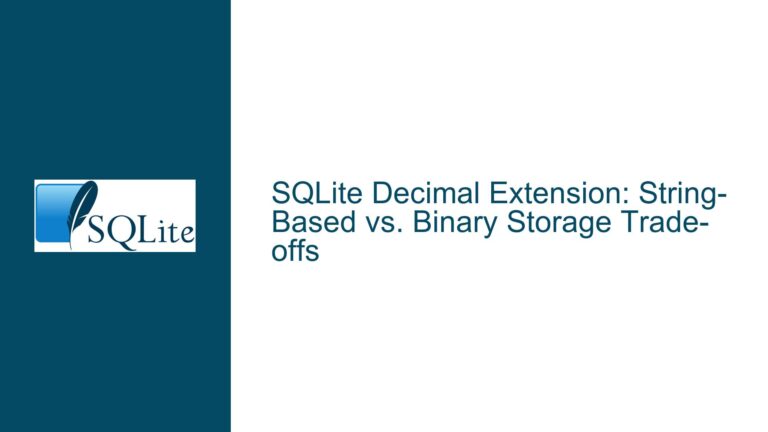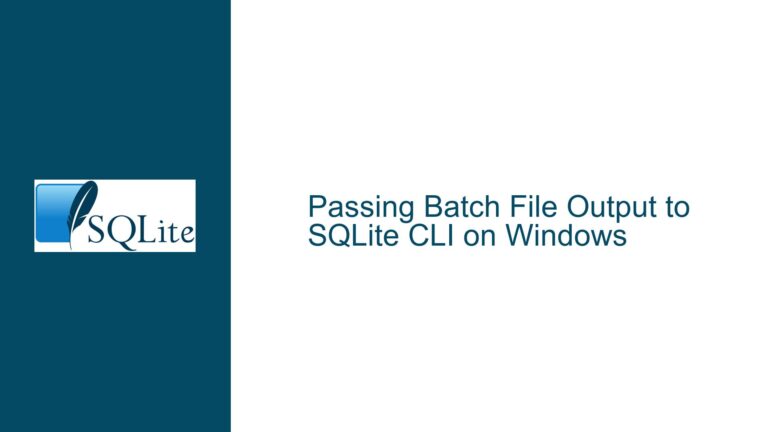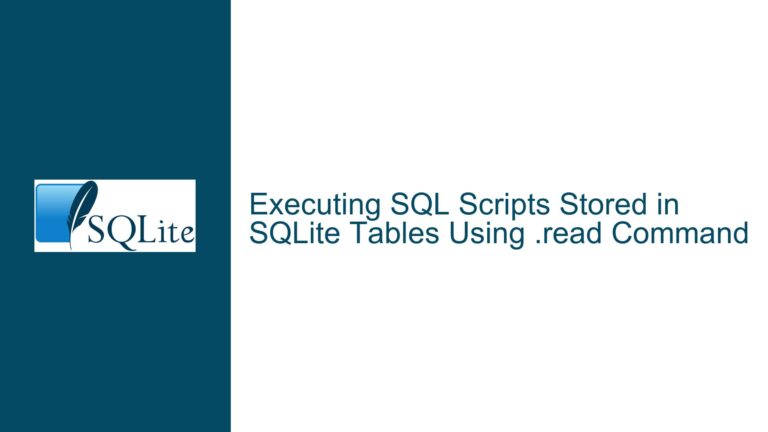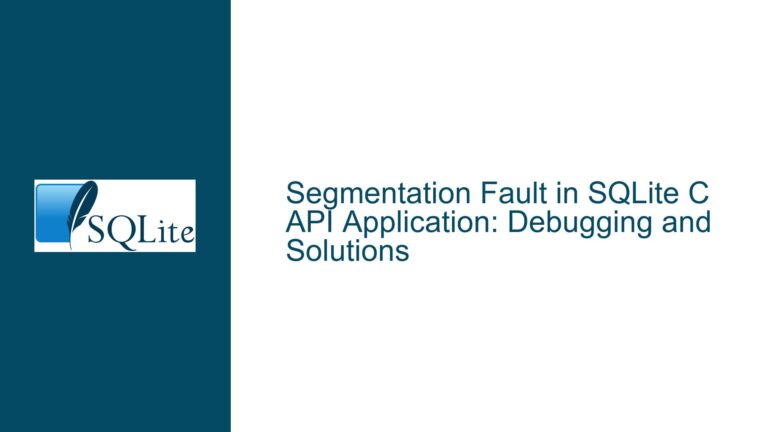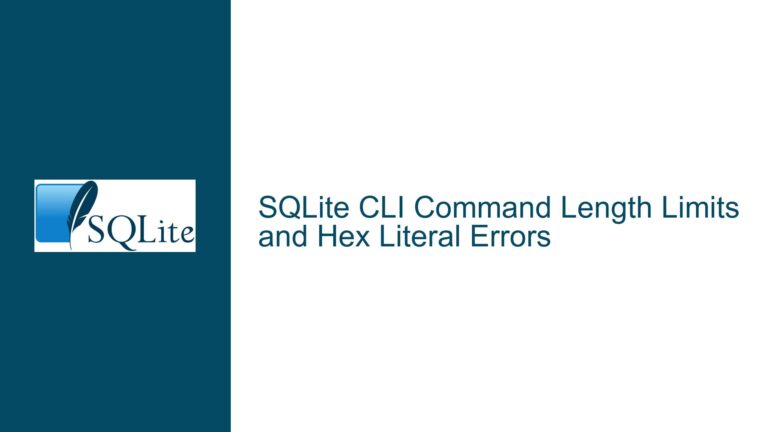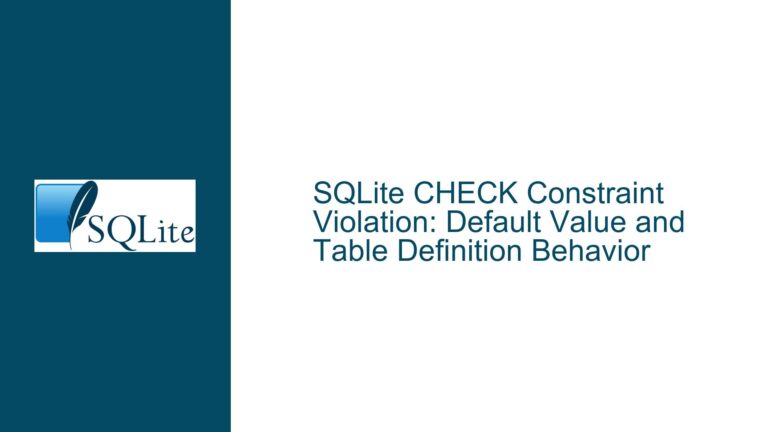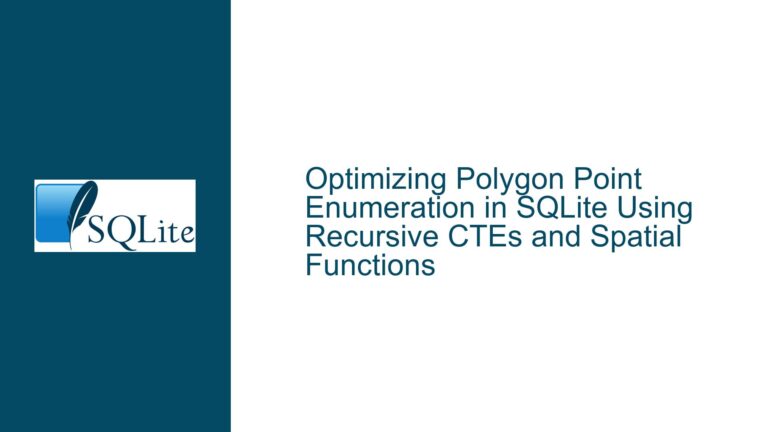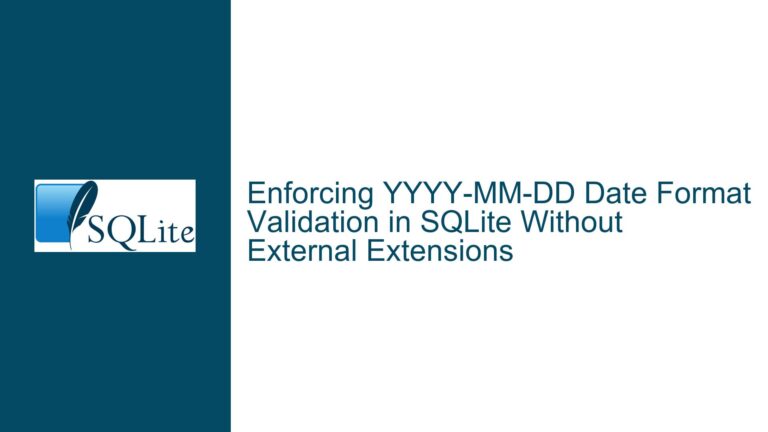SQLite Decimal Extension: String-Based vs. Binary Storage Trade-offs
String-Based Decimal Storage in SQLite’s New Decimal Extension The newly introduced decimal extension in SQLite employs a string-based approach for representing decimal numbers. This means that decimal values are stored as character arrays (strings) within the database. While this method is straightforward and leverages SQLite’s existing text handling capabilities, it introduces several considerations regarding performance,…
